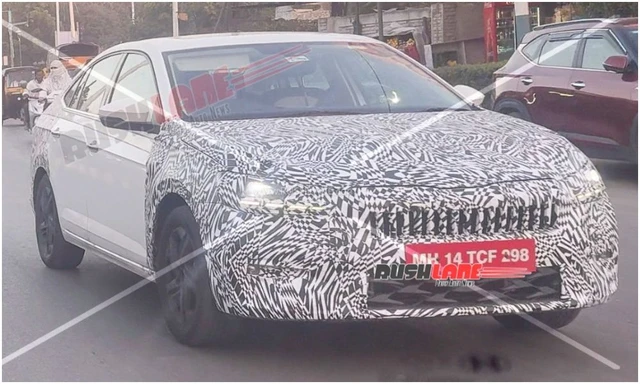Parking Rules In India You Should Know About

With the New Motor Vehicle Act of 2019 overwhelming gigantic punishments, individuals are tense for not overstepping the laws. Yet, a great many people don't understand, tragically on the off chance that they end up abusing any law. This situation goes without saying for individuals who leave their vehicles inappropriately or unlawfully.
Because of the absence of rules regarding parking spot issues in India, individuals alone are not at fault for their lack of traffic information. Indeed, organizations that gather parking information can prove to be helpful.

Among association regions, Delhi had the most significant number of vehicles, framing 4.21% of the complete enlisted engine vehicles in the country. The serious grouping of engine vehicles in enormous urban areas leads to different issues – contamination, gridlocks, and street mishaps. Quite possibly, the most relevant problem today is that of Parking and related infringement.
Parking in India

India doesn't have an extensive cross-country act that incorporates all that there is to sayregardingParking. The National Urban Transport Policy (NUTP) of India concocted by the Ministry of Urban Development in 2006 generally establishes the vibe for Parking in India. It guides state legislatures to make reasonable alterations to building rules to give good parking spots. The Municipal Corporation or the concerned city specialists have the order to administer both on-road and off-road Parking.
Parking Fine
The traffic police have the command to authorize stopping rules. It can charge a fine, lock and even tow a vehicle found disregarding traffic rules. Area 177 of the Motor Vehicles Act, 1988 enables it to impose a fine of Rs. 100 for a solitary offence and Rs. 200 for a continued stopping offence.
Essential Parking Rule:
- Try not to leave any vehicle concerning a street where traffic is streaming. Drive the car off the road onto the shoulder while halting.
- Try not to stop where one doesn't have a good view for somewhere around 50 meters in both the headings.
- Try not to leave in a spot that impedes a vehicle previously left, crosswalk, walk area walkway, going across or street entrance.
- Try not to stop close to the public access to a theatre, lodging, or public corridor when available to the general population.
- Try not to stop close to any convergence or a circuitous.
- Before opening the entryway of the left vehicle, glance around. Close the entrance the second one gets down.
- Leave the vehicle on the left side toward the traffic.
Kinds of Parking:

- parallel parking:
Parallel Parking implies leaving the vehicle in a line (front to back). The leaving region should be one and half times longer than the vehicle to be gone.
- Angular Parking:
Angular Parkingimplies leaving the vehicle at a point to the control of the street.
- Perpendicular Parking:
Perpendicular Parking implies that stop at the right point of the street check. Always reverse the vehicle in the parking spot so you can exit quickly.
Side of the road Stop:
- In a crisis, assuming you need to stop by the roadside, ensure the stop is extremely short.
- Give signal that you need to pull over and look at your mirrors and vulnerable side to see when the way is clear.
- Steer to the roadside, halting exceptionally near the check or edge of the street.
- Switch on the four-way crisis lights.
- Put on handbrakes.
Parking Restrictions
- Never park on the road, close to traffic crossing, turn, or a round-about.
- Attempt not to leave on the main street or where your vehicle hinders traffic, on the off-base roadside, and where leaving your car is denied.
With fitting informational collections, individuals will know what unlawful stopping is and what punishments get charged when viewed as a legitimate fault. Besides, they will realize public leaving charges and generally use the space to leave a more secure vehicle.
At this point, such collection innovation isn't accessible in India, and subsequently, there are rising stopping issues and infringement consistently. With the shortfall of such invention, the Indian streets may need to confront more blockage and traffic/stopping rule offences causing genuine life risks.
Trending News
Latest News
 Jaiveer Mehra | Dec 15, 2025Mahindra XUV 7XO Interior Previewed Ahead Of Debut; Triple Screen Layout ConfirmedNew teaser video provides a glimpse at the facelift XUV 700’s cabin and confirms some of the features.1 min read
Jaiveer Mehra | Dec 15, 2025Mahindra XUV 7XO Interior Previewed Ahead Of Debut; Triple Screen Layout ConfirmedNew teaser video provides a glimpse at the facelift XUV 700’s cabin and confirms some of the features.1 min read Jaiveer Mehra | Dec 15, 20252026 MG Hector Facelift Launched At Rs 11.99 LakhThe latest facelift of MG’s SUV brings tweaks to the styling and cabin, along with a few new features.3 mins read
Jaiveer Mehra | Dec 15, 20252026 MG Hector Facelift Launched At Rs 11.99 LakhThe latest facelift of MG’s SUV brings tweaks to the styling and cabin, along with a few new features.3 mins read car&bike Team | Dec 14, 2025Top-Spec Tata Sierra Accomplished, Accomplished+ Prices RevealedRegardless of the powertrain combination chosen, all Tata Sierra Accomplished+ trims cost upwards of Rs 20 lakh (ex-showroom).2 mins read
car&bike Team | Dec 14, 2025Top-Spec Tata Sierra Accomplished, Accomplished+ Prices RevealedRegardless of the powertrain combination chosen, all Tata Sierra Accomplished+ trims cost upwards of Rs 20 lakh (ex-showroom).2 mins read car&bike Team | Dec 13, 2025Skoda Slavia Facelift Spied Testing Again Ahead Of DebutThe facelifted Slavia is expected to debut in 2026 as Skoda-VW India looks to refresh its India 2.0 range.1 min read
car&bike Team | Dec 13, 2025Skoda Slavia Facelift Spied Testing Again Ahead Of DebutThe facelifted Slavia is expected to debut in 2026 as Skoda-VW India looks to refresh its India 2.0 range.1 min read car&bike Team | Dec 13, 20252026 MG Hector Facelift Interior Previewed Ahead Of DebutLatest teaser video of the upcoming Hector facelift suggests minimal cosmetic changes to the interior as well as reveals a new alloy-wheel design.1 min read
car&bike Team | Dec 13, 20252026 MG Hector Facelift Interior Previewed Ahead Of DebutLatest teaser video of the upcoming Hector facelift suggests minimal cosmetic changes to the interior as well as reveals a new alloy-wheel design.1 min read Jaiveer Mehra | Dec 13, 2025Passenger Vehicle, Two-Wheeler Sales Surge In November 2025: SIAMBoth segments reported a growth in the region of 20 per cent, though year-to-date sales growth in FY2026 was notably flatter at around 3 per cent.1 min read
Jaiveer Mehra | Dec 13, 2025Passenger Vehicle, Two-Wheeler Sales Surge In November 2025: SIAMBoth segments reported a growth in the region of 20 per cent, though year-to-date sales growth in FY2026 was notably flatter at around 3 per cent.1 min read
 Janak Sorap | Dec 11, 2025Harley-Davidson X440 T First Ride Review: Smarter and SharperHarley-Davidson has taken the X440 and given it a more focused and engaging twist. The result is the X440 T—essentially the same platform but updated in areas that give the motorcycle more appeal and riders more thrill.5 mins read
Janak Sorap | Dec 11, 2025Harley-Davidson X440 T First Ride Review: Smarter and SharperHarley-Davidson has taken the X440 and given it a more focused and engaging twist. The result is the X440 T—essentially the same platform but updated in areas that give the motorcycle more appeal and riders more thrill.5 mins read Shams Raza Naqvi | Dec 10, 20252025 Mini Cooper Convertible Review: More Colour On Indian RoadsThe updated Mini Cooper Convertible is set to be launched in the Indian market in the next few days. We drive it around Jaisalmer for a quick review.1 min read
Shams Raza Naqvi | Dec 10, 20252025 Mini Cooper Convertible Review: More Colour On Indian RoadsThe updated Mini Cooper Convertible is set to be launched in the Indian market in the next few days. We drive it around Jaisalmer for a quick review.1 min read Bilal Firfiray | Dec 8, 2025Tata Sierra Review: India’s New Favourite?Marking its return after a few decades, the reborn Sierra has made everyone sit up and take notice. But is it worth the hype?10 mins read
Bilal Firfiray | Dec 8, 2025Tata Sierra Review: India’s New Favourite?Marking its return after a few decades, the reborn Sierra has made everyone sit up and take notice. But is it worth the hype?10 mins read Girish Karkera | Dec 4, 20252026 Honda Prelude First Drive: Domesticated Civic Type RA sporty-looking coupe built to give customers a taste of performance but not at the expense of everyday practicality.5 mins read
Girish Karkera | Dec 4, 20252026 Honda Prelude First Drive: Domesticated Civic Type RA sporty-looking coupe built to give customers a taste of performance but not at the expense of everyday practicality.5 mins read Seshan Vijayraghvan | Nov 29, 2025Mahindra XEV 9S First Drive Review: Big Electric SUV, Bigger ExpectationsThe XEV 9S lands at a time when the EV crowd is growing fast. It’s a big, born-electric, three-row SUV that starts under 20 lakh. It sits close to the XUV700 in size, but the brief is very different. Here’s what it’s like on the road.11 mins read
Seshan Vijayraghvan | Nov 29, 2025Mahindra XEV 9S First Drive Review: Big Electric SUV, Bigger ExpectationsThe XEV 9S lands at a time when the EV crowd is growing fast. It’s a big, born-electric, three-row SUV that starts under 20 lakh. It sits close to the XUV700 in size, but the brief is very different. Here’s what it’s like on the road.11 mins read

































































































































